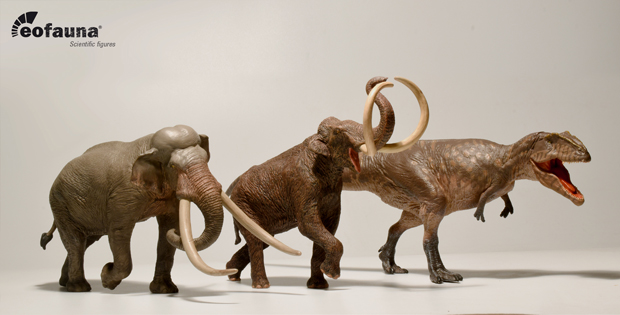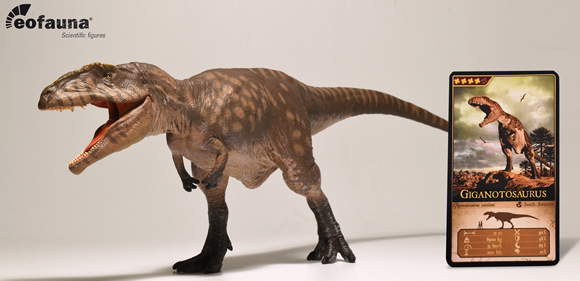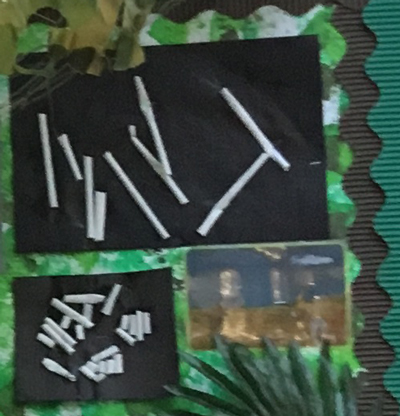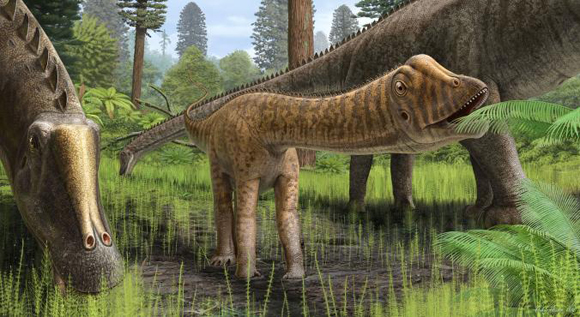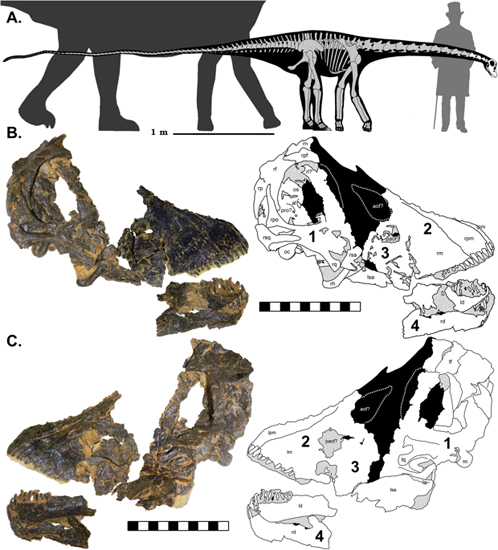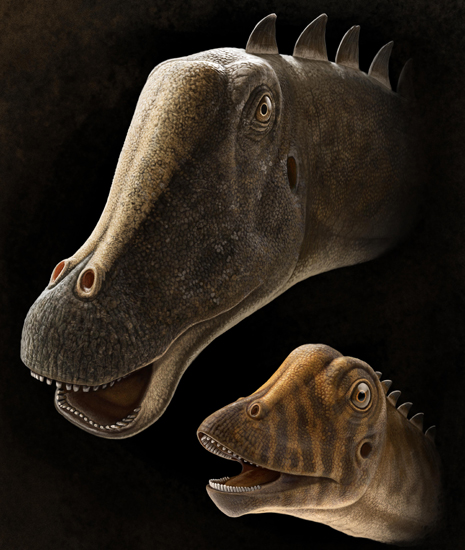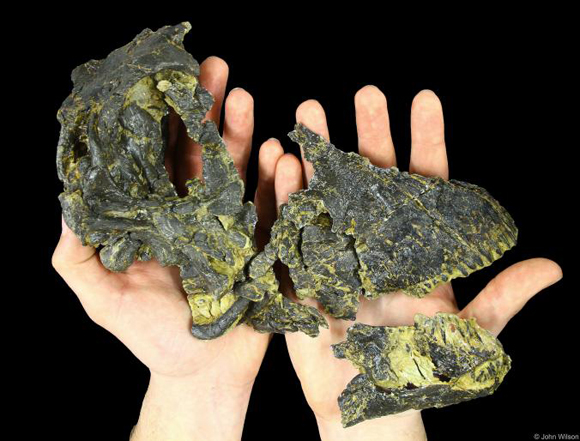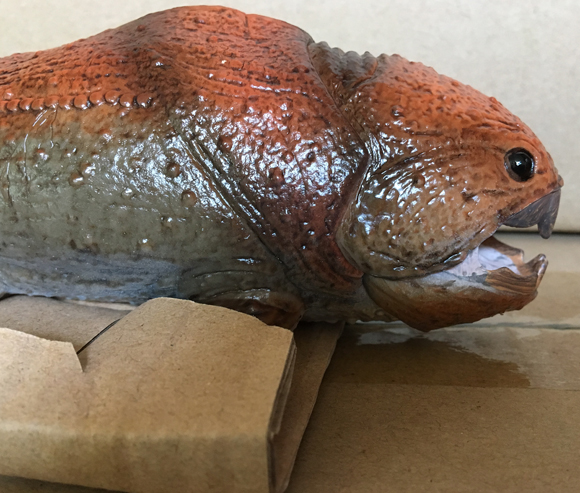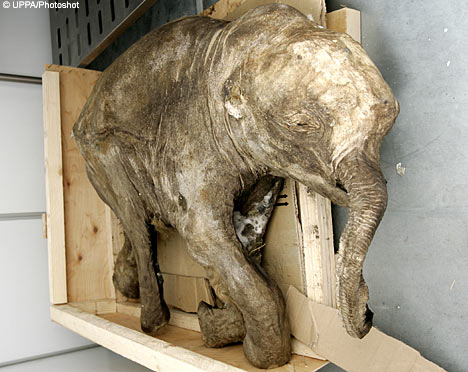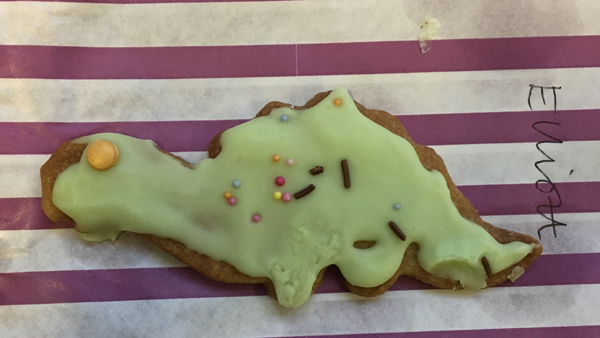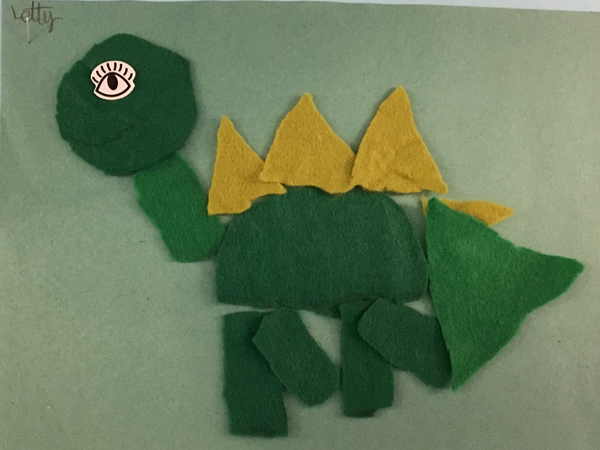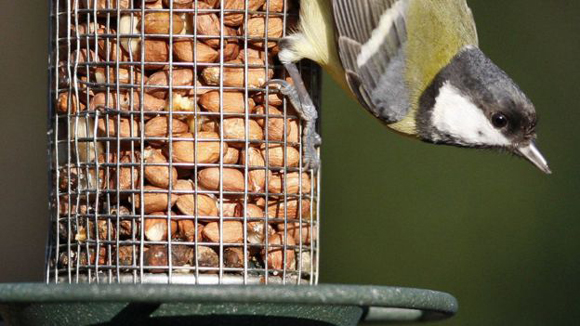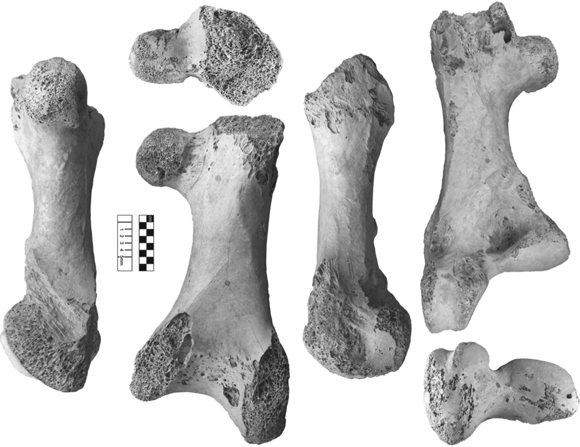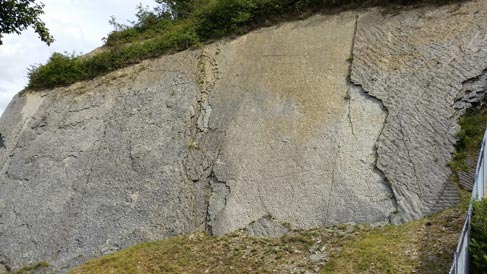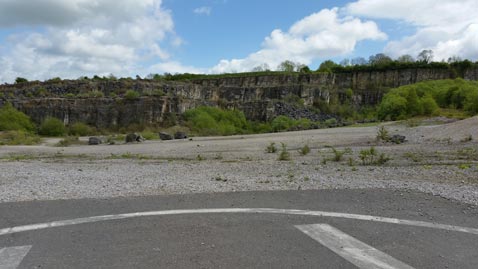“Powerful Terror Ruler” – Dynamoterror dynastes
A new species of North American tyrannosaur has been scientifically named. The newly described “tyrant lizard” joins a plethora of tyrannosaurids known from the Late Cretaceous of Laramidia, but Dynamoterror dynastes stands out from the majority of these fearsome theropods for some very important reasons.
Firstly, it is quite geologically old for a Late Cretaceous large-bodied tyrannosaur, its discovery has implications for our understanding of tyrannosaur evolution. In addition, its the frontal bones that help make this dinosaur stand out and besides, its scientific name, which means “powerful terror ruler”, is a nod in the direction of the most famous dinosaur of all – Tyrannosaurus rex.
A Life Reconstruction of Dynamoterror dynastes Attacking the Recently Described Invictarx zephyri
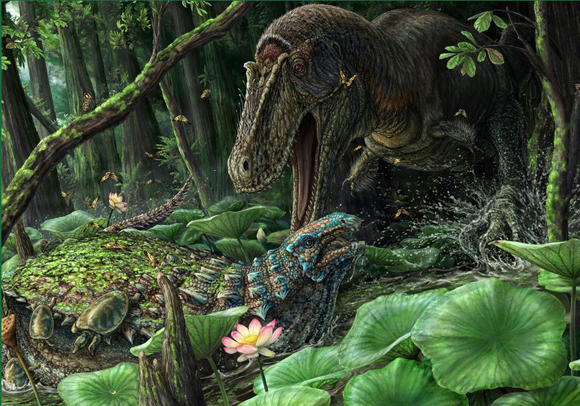
Dynamoterror ambushes the armoured dinosaur Invictarx zephyri.
Picture credit: Brian Engh
The Geological Age – Early Campanian
The fossil bones, representing a single, individual animal were collected in 2012. They herald from San Juan County, New Mexico, specifically the upper part of the Allison Member of the Menefee Formation. Although fragmentary, the fossil material consists of asociated bones including left and right frontals (bones from the top of the skull over the eye socket), a right metacarpal (bone from the hand), four broken pieces from the backbone, pieces of rib, a portion of the right ilium and some toe bones, plus several unidenfiable slithers of bone.
It might not sound like much, but this is the first associated tyrannosaurid skeleton reported from the Menefee Formation. Isolated teeth had been found in this locality before suggesting the presence of tyrannosaurids, but Dynamoterror dynastes is the first to be named and described. It was probably the dominant predator in the lush, tropical, coastal swamps that covered this part of the southern United States some 80 million years ago.
During the Late Cretaceous, North America was essentially split into two by a wide seaway, the Western Interior Seaway. To the east lay Appalachia and tyrannosaurs are known from here, but not many, only two genera have been named to date – Appalachiosaurus montgomeriensis and Dryptosaurus aquilunguis and both of these are only known from a single, partial, associated skeleton.
Dynamoterror dynastes
In the Upper Cretaceous strata to the west that formed the landmass called Laramidia, lots of tyrannosaurs have been named and described. However, the tyrannosaurid record for Laramidia is restricted to a period from about 77 million years ago to the K-Pg extinction event some 66 million years ago. Dynamoterror comes from rocks which are around 3 million years older. It provides the first fossil record of a Laramidian tyrannosaurid from the Early Campanian of 80 million years ago and, as a result, will help palaeontologists to better understand tyrannosaurid evolution.
The Cool Thing About Frontals
Less than one percent of the skeleton may have been found (field teams were despatched in 2013 and again this year to try and find more remains but without luck), but when it comes to describing a new genus, it is often quality that triumphs over quantity. The frontal bones, their shape, the groves that they possess and other features including how they knit together with other skull bones, can prove extremely helpful when it comes to identifying a new dinosaur species. The researchers which included Dr Andrew McDonald (Curator, of the Western Science Centre, California), identified some unique characteristics in the frontal bones, hence the establishment of a new genus.
Photographs and Computer-generated Three-dimensional Models of the Left and Right Frontals of D. dynastes
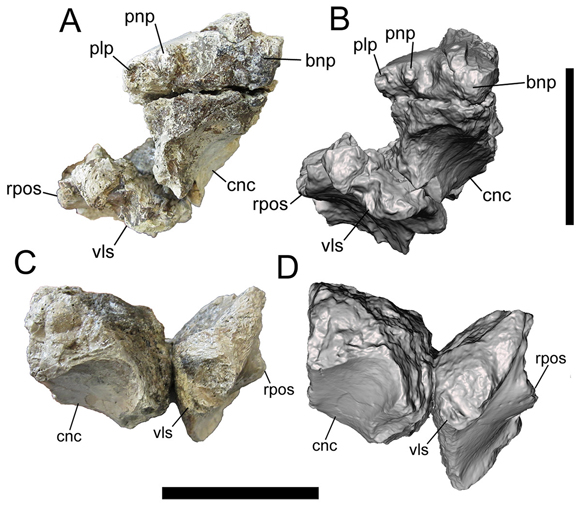
Photographs and three-dimensional, computer-generated models of the right frontal (A, B) and the left frontal (C, D) of Dynamoterror dynastes (rostal view – viewed from the front of the brain). Scale bar = 5 centimetres.
Picture credit: PeerJ/Western Science Centre
Dynamoterror dynastes A Large Bodied Tyrannosaur
The researchers cannot be certain whether their fossil discovery represents a fully grown animal or a sub-adult. However, when the frontal bones of D. dynastes were compared to those of Tyrannosaurus rex, the scientists concluded that Dynamoterror was at least nine metres long. The armoured dinosaur that features in the illustration (above), Invictarx, was also named and described by Dr McDonald, along with Mr Doug Wolfe (Zuni Dinosaur Institute for Geosciences) who worked together on this tyrannosaur. It is likely that more dinosaurs will be described based on fossil discoveries from within the Menefee Formation. Alton C. Dooley Jr also collaborated in the study of Dynamoterror.
To read about the discovery of the nodosaurid Invictarx: A New Nodosaur from New Mexico.
Size Comparison of Selected Late Cretaceous Tyrannosaurs

Size comparison between selected Late Cretaceous tyrannosaurs. Picture credit: Everything Dinosaur.
Picture credit: Everything Dinosaur
What’s in a Name?
This new taxon provides further, significant insight into the morphology and diversity of tyrannosaurids from the Early Campanian of Laramidia and it’s name is pretty cool too. The genus name is taken from the Greek word “dynamis” which means “power” and the Latin word “terror”. The trivial or specific name, is from the Latin word “dynastes” meaning “ruler”. Hence, the binomial scientific name Dynamoterror dynastes translates to “powerful terrror ruler”, however, the scientific paper also states that this epithet honours the name “Dynamosaurus imperiosus“, from Henry Fairfield Osborn, the American palaeontologist who referred to fossil material later assigned to Tyrannosaurus rex as Dynamosaurus imperiosus in scientific papers published in the early years of the 20th century.
The Reconstructed Frontal Complex of Dynamoterror dynastes
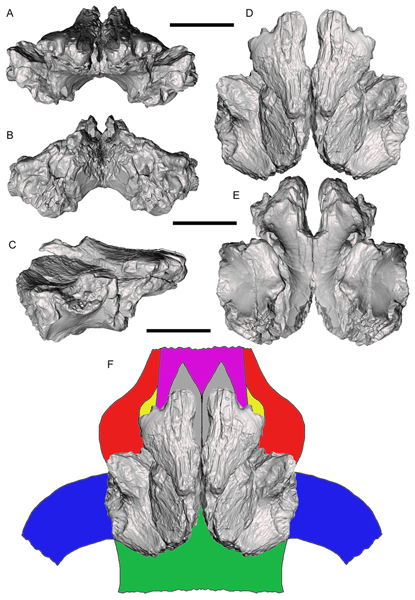
The reconstructed frontals of D. dynastes.
Picture credit: PeerJ/Western Science Centre
Analysing the Frontals
In the picture above, the left and right frontals have been articulated together to show how they would sit at the top of the skull, in (A) rostral; (B) caudal; (C) right lateral; (D) dorsal; and (E) ventral views. The illustration (F), shows a view of the reconstructed skull in dorsal view. Individual bone elements of the skull are colour-coded to show how the top of the skull knitted together: frontals (grey); fused nasals (violet); prefrontals (yellow); lacrimals (red); postorbitals (blue); and parietal (green).
The scale bars represent 5 centimetres and the missing skull bones have been based on the related tyrannosaurid Teratophoneus curriei, a geologically younger tyrannosaur from the Upper Campanian of southern Utah (Kaiparowits Formation). T. curriei roamed Laramidia around 76 million years ago, some 4 million years after Dynamoterror dynastes.
The scientific paper: “A New Tyrannosaurid (Dinosauria: Theropoda) from the Upper Cretaceous Menefee Formation of New Mexico” by Andrew T. McDonald, Douglas G. Wolfe and Alton C. Dooley published in PeerJ.
Visit the Everything Dinosaur website: Everything Dinosaur.
